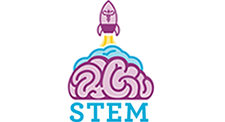Lessons
Lesson Plans
USAMRMC offers a variety of lesson plans that align with education standards to allow teachers and students to apply STEM principles in the classroom. The below lesson plans have been written, complied, and adapted by undergraduate students majoring in a STEM or Education field and reviewed by a Master's Teacher.
Here are five of our most recently posted lessons. Click any lesson plan title below to read more.
The Effects of Agonist and Antagonist Drugs on Daphnia Heart Rate (High School)
Synopsis: Students will study the effects of the neurotransmitters nicotine, caffeine, ethanol, and acetylcholine on Daphnia Heart Rate. This experiment will be conducted with 1 partner.
Purpose: Students will observe and learn about cellular communication and its importance in multi cellular organisms.
Written by: Eric Nam
Lesson Plan: Effects_of_agonist_and_antagonist_drugs_on_Daphnia_Heart_Rate.pdf (197 KB)
Power Point: Effects_of_agonist_and_antagonist_drugs_on_Daphnia_Heart_Rate.pptx (1.2 MB)
Air Resistance and Gravity (Upper Middle and High School)
Synopsis: Students will experiment with objects of different size, surface area, and mass in order to better understand the concept of gravity and air resistance. This experiment will take place in groups of 3 or 4 students and is for students in grades 8 through 11. The students will have different roles in the groups such as meter stick holder, object dropper, timer and recorder.
Purpose: For students to understand the relation between air resistances, surface area, mass, gravity/acceleration, as well as force.
Written by: Nichole Stoner
Lesson Plan: Air_Resistance_and_Gravity.pdf (484 KB)
Power Point: Air_Resistance_and_Gravity.pptx (490 KB)
Exploring Aviation Science (Middle School)
Synopsis: Through physical experimentation, students will learn about the principles of air and the properties of objects and materials as they explore the basics behind the four forces of flight. Students will be divided into groups and discover the effects of gravity on a tennis ball, the thrust provided by an inflated balloon, the drag created by friction and the lift produced by their own hands in a stream of air.
Purpose: To develop young students interest in aviation science and teach students the principles of air and flight.
Written by: Trevante Dukes
Lesson Plan: Exploring_Aviation_Science.pdf (496 KB)
Power Point: Aviation_Science.pptx (832 KB)
Float My Boat (All Levels)
Synopsis: Students will build a floatable boat out of 5 by 5 foil squares. Later, students will test their structure based on sturdiness by placing pennies into the boat.
Purpose: For students to think outside the box to construct a sturdy boat and should consider making multiple boats before finalizing their boat. Overall, students will understand the importance of how trial and error can lead to open doors and new ideas. Therefore, collaborating ideas to build the sturdiest boat.
Written by: Mona Patel
Lesson Plan: Float_My_Boat.pdf (381 KB)
Power Point: Float_My_Boat.pptx (831 KB)
Metapopulation: A Result of Habitat Fragmentation (Middle School)
Synopsis: Habitat Fragmentation, natural and anthropogenic, can result in a metapopulation. Students will discover what a metapopulation is and how each subpopulation plays a role in keeping the species alive. Students will be able to identify source and sink subpopulations and will be able to understand the environmental impacts that lead them to be a source or a sink. Genetic Diversity and Gene Flow can also be illustrated through indicated colors of each subpopulation. This information will be used to analyze the survivability of a species.
Purpose: The purpose is for the students to comprehend the impact of habitat fragmentation on species in the wild. The genetic diversity may also be negatively impacted through fragmentation which influences the survivability of the species.
Written by: Eileen Connell
Lesson Plan: Metapopulation.pdf (404 KB)
Power Point: Habitat_Fragmentation_Final.pptx (472 KB)
Last Modified Date: 28-Jan-2015





